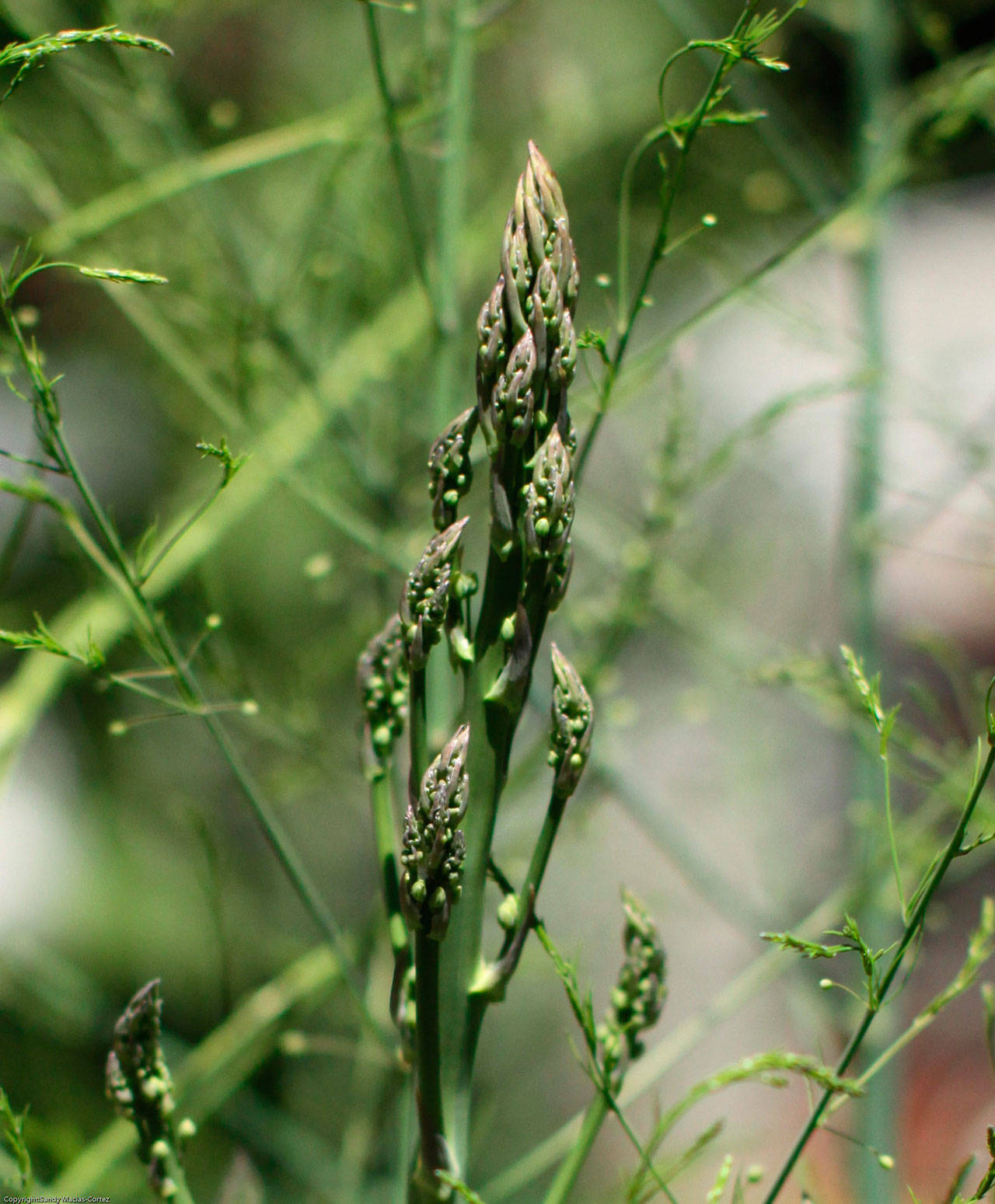Washington state is a major producer of asparagus. With a commercial harvest of more than 50 million pounds each year, our state is second only to California in asparagus production. But many local gardeners report difficulty growing this popular crop. How could that be?
Asparagus doesn’t like “wet feet” and grows well east of the Cascades in well-drained sandy soil. West of the mountains, excessive winter rainfall and heavier soils can result in soggy soil. Wet soil and standing water lead to root rot and death of asparagus plants. And that’s not good!
With a few precautionary steps, however, you can grow asparagus successfully.
Planting
Most gardeners grow asparagus from crowns (spider-like root clumps) as opposed to seed. Asparagus crowns can be purchased online or at most nurseries in late winter/early spring. Choose 1-year old dormant clumps that look firm and fresh, not withered or mushy.
Plant the crowns after all danger of a hard frost is passed, in a sunny, well-drained spot. Remember, poor drainage is one of the primary reasons asparagus does not thrive. To improve drainage, work plenty of organic matter (compost or well-rotted manure) into the soil. If you live in a soggy location, consider planting in a 2 to 3-foot-high raised bed.
To plant, dig a trench 8 inches deep. Place the crowns at the bottom of the trench 18 inches apart and spread out the roots. Because it can be difficult for young plants to grow through 8 inches of soil, initially cover the crowns with only 2 inches of soil.
When shoots appear, add another 2 inches of soil.
Continue adding 2 inches of soil every couple of weeks until the trench is filled. Take care never to cover the growing tips.
The young shoots (also called spears) are the part of the plant that we eat. As the weather warms, asparagus spears diminish in size and number. Unharvested spears develop fern-like growths reaching 5 or more feet tall. These structures photosynthesize, nourishing the underground parts of the plant, and are critical to the establishment of a strong root system and a good harvest in future seasons.
Harvesting
Asparagus crowns typically produce a few skinny spears the year after planting. As the plants become established, the number of spears increases.
Do not harvest any spears the first year or two after planting and allow all to develop into ferns. Take a small harvest the third year. After that, harvest for 3-4 weeks each season or until new spears are no thicker than a pencil (about 3/8 inch in diameter); then stop harvesting. Always leave a few spears to develop into ferns.
Harvest spears when they are 6-8 inches tall. If they are taller or their heads are open, the spears become woody. Cut (or snap off) the spears at the soil line. As you harvest, be careful not to injure new spears that have not yet emerged.
Asparagus is a heavy feeder and should be fertilized twice during the growing season: once as spears start to emerge early in the season and again when the ferns start growing. Broadcast a complete fertilizer such as 5-10-10 on the bed at the rate of 2-5 pounds per 100 square feet.
Irrigate as necessary to promote and sustain good fern growth after the harvest, well into the fall. The ferns should be left alone until killed by frost, then cut off at soil level. Removing the dead foliage in the fall helps prevent pests and diseases from over-wintering in your asparagus bed. Because of drainage issues, consider covering your beds with plastic or a tarp over the winter.
With a little time — like 3-4 years — and effort you can establish an asparagus patch that will produce more than your family can eat for many years to come. So give it a try!
Jeanette Stehr-Green is a WSU-certified Clallam County Master Gardener.



